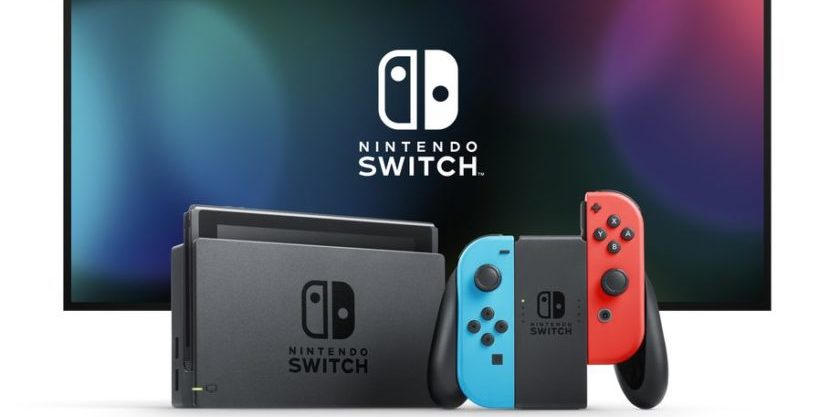M+E Connections

DFC: Nintendo to Sell 17.6 Million Switch Consoles in North America Through 2020
Story Highlights
DFC Intelligence is predicting Nintendo will sell a total of 17.6 million units cumulatively of the new Switch hybrid video game home console and portable system in North America through 2020. The game system ships March 3 at $299.99 in the U.S.
The forecast was included in a 22-page report by DFC that the game industry research company provided to the Media & Entertainment Services Alliance (MESA). DFC said it expects 3.9 million units of the system will be sold in North America in 2017 based on demand that it expects will be strong, but weakened by initially constrained hardware shipments and a limited number of software titles. DFC projected North American hardware sales will grow to 4.7 million units in 2018 and then inch up to 4.8 million in 2019, before slipping to 4.2 million in 2020.
The research company didn’t break out its North American forecast by country. But the vast majority of game consoles sold in North America are typically in the U.S.
The North American hardware projection was part of a global DFC forecast of 40.1 million Switch units being sold by 2020. DFC predicted 8.3 million units will be sold this year, growing to 10.7 million in 2018 and then increasing to 11.1 million in 2019 before dropping to 10 million in 2020.
The two other major game console markets are Europe and Japan. DFC predicted that European Switch hardware sales will be 2.5 million units this year and that will increase to 3.1 million in 2018 and 3.2 million in 2019, but sales will dip to 2.9 million in 2020 for a cumulative total of 11.7 million. The research company projected that Japan Switch hardware sales will total about 700,000 units in Japan, 1.3 million in 2018, 1.5 million in 2019 and 1.4 million in 2020 for a cumulative total of 4.9 million.
DFC also estimated that Nintendo will sell 16.9 physical units of Switch game software globally in 2017, 43.4 million units in 2018, 61.1 million in 2019 and 56.5 million in 2020. The research company projected global digital Switch game revenue will total $462 million this year, $1.1 billion in 2018, $1.6 billion in 2019 and $1.8 billion in 2020.
Although the forecast for digital Switch software sales was “modest,” DFC said in the report that “could be subject to change based on the strength of Nintendo’s upcoming online service” for the system.
If Nintendo does indeed sell more than 40 million units of the Switch globally through 2020, that “would make it a fairly successful” Nintendo console, DFC said. But DFC said it “erred on the conservative side based on the poor recent performance” of Nintendo hardware. The Wii U console fared especially badly for Nintendo, with estimated sales of only about 15 million globally through 2016, DFC estimated. As of Sept. 30, only 13.36 million units had been sold, according to Nintendo’s website. That’s far less than the whopping 101.63 million units of the first Wii that had been sold globally through Sept. 30.
But DFC said: “With the Wii and the DS, Nintendo has showed with the right product they can sell significantly more systems than DFC is currently estimating” for Switch. In the peak year for Nintendo, 2008, the DS handheld system and first Wii console combined to sell about 55 million hardware units, DFC said, adding: “That is more than the combined units currently forecasted” by DFC for Switch through 2020.
However, DFC also pointed out that, “with the notable exception of the Wii which launched in 2006, each Nintendo game console has sold less than its predecessor.”
What could also hurt Switch sales are its “reasonable,” but still “high” launch price that “does not include any bundled software,” DFC said, adding that, as a result: “In reality the system costs $350+ to get up and running.” That is “considerably more than the cost of the Xbox One and PlayStation 4 when bundled software is accounted for,” DFC said. Nintendo is also “encouraging the purchase of multiple controllers which are expensive, ranging from $50 to $70,” DFC said.
Although Switch is “powerful for a tablet,” it’s “more limited versus competing console systems” from Microsoft and Sony, DFC went on to say in the report. The system comes with a custom Tegra processor from Nvidia, which is also providing significant middleware support for the system, DFC said. Switch also comes with only 32 GB of storage memory – much less than the 500-plus GB storage of the Xbox One and PS4, it said, adding that although the new system will support SD cards, “it is clear that storage of digital games for the Switch will be fairly expensive.”









